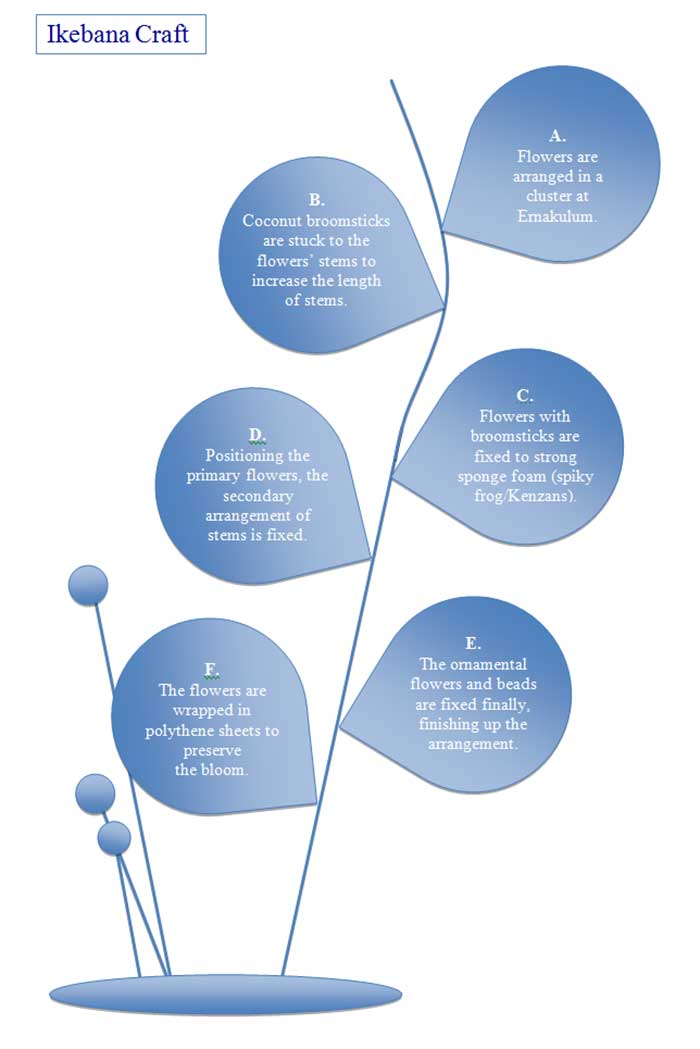Design Resource
Ikebana Craft - Ernakulum, Kerala
Art of Arranging Flowers
by
The Making process of Ikebana at Ernakulum, the city of Kochi (Kerala, India) is quite different when compared to Japanese art of arranging flowers. In Japanese they have many ways of arranging flowers but most common styles are Heika and Moribana styles. Heika (standing flowers) is a basic style of Ikebana arrangement, a tall narrow opening vase is used and arrangement of plants are vertical, the stems are tied together at the mouth. The arrangements have primary, secondary and ornamental stems, the lengths and angles differ according to type of style adopted. The primary stem is one and a half times the height of the vase and secondary and ornamental stems are half the primary branch in Heika style. In Moribana (piled-up flowers) the arrangement is done on a shallow container with spiky frog (a holder with many sharp points which holds flowers when fixed) and looks like bunch of stems and flowers. At Ernakulum the flowers are arranged in a cluster. Coconut broom sticks are stuck to the flowers’ stems to increase the length of stems and then they are fixed to strong sponge foam (spiky frog/Kenzans). The flowers chosen are placed first to the foam. Then followed by three different kinds of plant materials. Positioning the primary flowers the secondary arrangement of stems are fixed. After the secondary arrangement of flowers the ornamental flowers and beads are fixed finally, finishing up the arrangement. To preserve the bloom the flowers after arrangement are wrapped with thin polythene sheets and taped or kept open otherwise. The arrangement is done in custom ways even creating the arrangement to look that of heart and round shapes. These look very exquisite and soothe the minds.





















